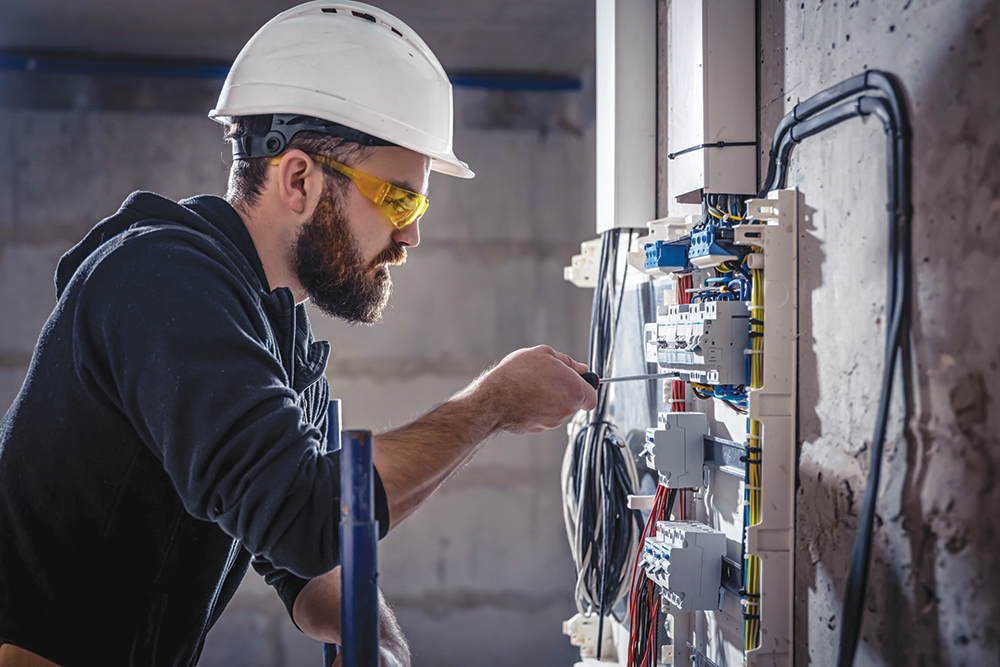Outage Protection

Our businesses and homes are filled with many items that are susceptible to power surges. This includes anything with a microprocessor, like computers, TVs and kitchen appliances. Power surges, even low-level fluctuations, can damage sensitive electronic equipment. Take steps to protect these items.
What causes a power surge or voltage variation?
Fluctuations in voltage of the electricity that flows into your business or home, sometimes called a power surge, occasionally interfere with normal equipment operation. A surge can stem from inside, occurring when equipment with a motor starts up or shuts down.
A surge also can be caused by external factors resulting from a lightning strike or something interacting with a power line.
How can I protect equipment at my business and home?
Whether it’s equipment vital to business operations or that expensive large-screen TV in the family room, protecting it from surges now can prevent downtime, as well as repair or replacement costs in the future.
When it comes to surge-protection devices for business or residential properties, there are three types that meet industry standards:
Type 1: Full-building surge protection. Also known as service entrance surge protectors, these are the strongest type of protection devices. A qualified electrician can install these permanently connected, hard-wired devices near the utility pole where electricity enters your main breaker panel. Type 1 devices help filter the power that enters your building, ensuring external factors are mitigated before entering your internal power system.
Type 2: Branch or load circuit protection. Type 2 devices are the main protection system for all low-voltage electrical installations. A qualified electrician can install these permanently connected, hard-wired devices in each electrical switchboard to help limit transient voltage.
Type 3: Point-of-use or device-specific protection. Power strips, the most commonly seen type of surge protectors, are Type 3 devices. Some are able to redirect and protect against medium surges, while others only guard against a mild surge. Look for these features when purchasing power strips:
- An on/off switch to shut off power to every component.
- A light or alarm letting you know a high-level surge occurred.
- A response time of 10 nanoseconds or less.
- A higher joule rating, which measures the ability of the strip to absorb surges. A rating of 400 is good, but 600 is better.
Keep in mind that no product can provide 100% protection against a major surge like a lightning strike. In the case of damage, it’s recommended property owners contact their insurance provider.
Uninterruptible power supply
An uninterruptible power supply (UPS) device can be placed between the electrical receptacle and the computer (or other electronic equipment) to isolate it from an outage. When the UPS senses a change in voltage or a power outage, it switches to battery backup. The batteries provide time to save information and shut down. Some models use software that can close and save your files before safely shutting off the computer. This is typically referred to as an unattended shutdown.
UPS types
There are three types of UPS:
- Offline UPS allows power to flow until it detects a change in voltage or a power outage. Then it switches the computer from the incoming line to internal batteries.
- Line-interactive UPS features an internal circuit that interacts with the incoming voltage to increase or decrease the incoming voltage. It does this without resorting to battery power. Regulating the voltage without resorting to battery power helps the batteries last longer and assures they are only used during a power outage.
- Online UPS powers the computer or other equipment from an internal power supply 100% of the time. AC power from the incoming line is converted to DC, converted back to AC and then fed to the computer. This provides the highest level of protection.
What does MGE recommend?
MGE recommends a UPS be applied to electronic equipment that could be adversely affected by power problems. These include PCs, PLCs, phone systems, etc. Choose the type of UPS by how critical the equipment is that you need to protect.
Keep in mind that no product can provide 100% protection against a major surge like a lightning strike. In the case of damage, it’s recommended property owners contact their insurance provider.

